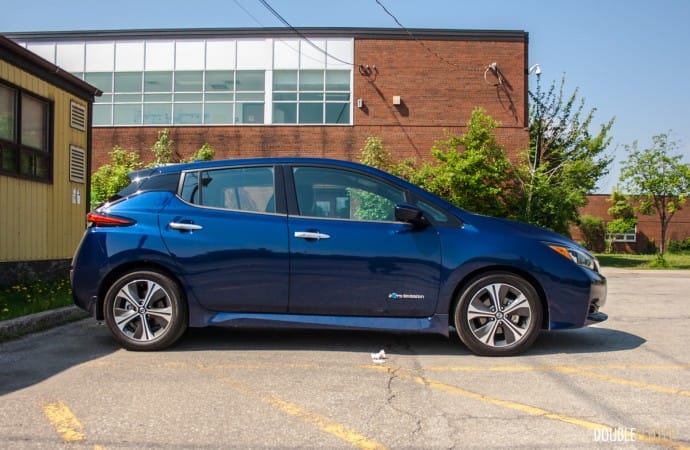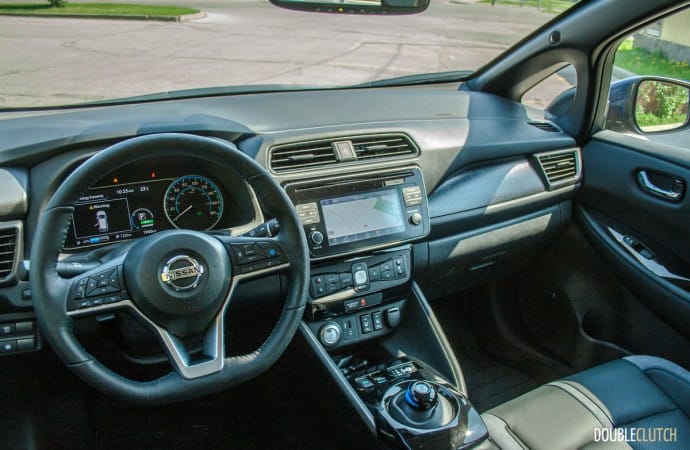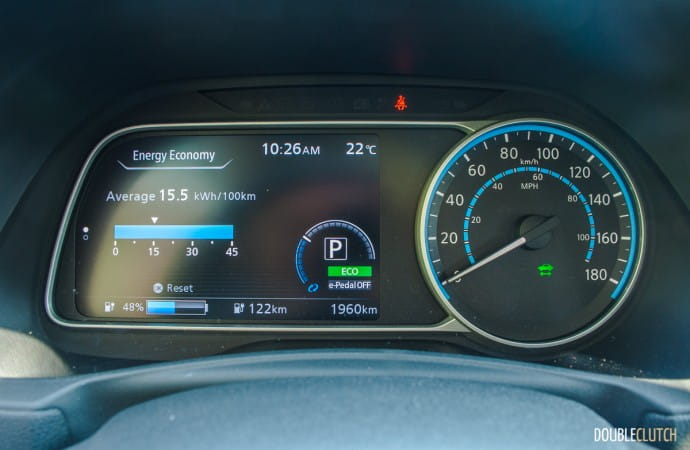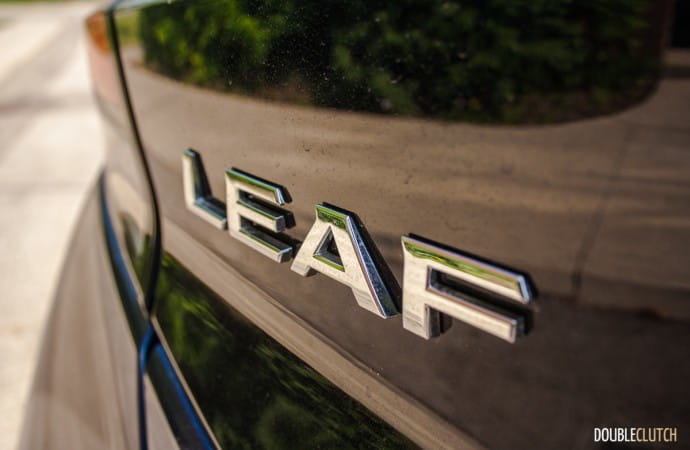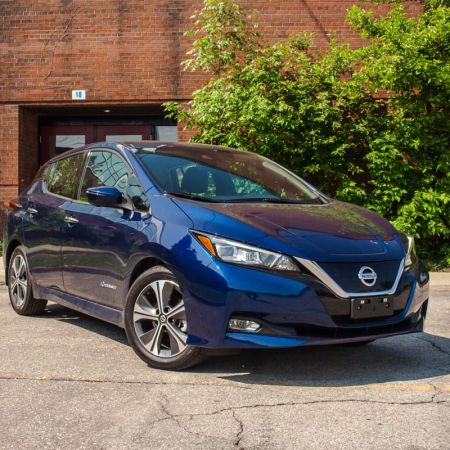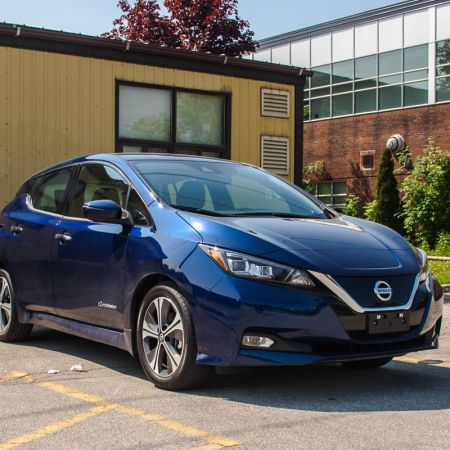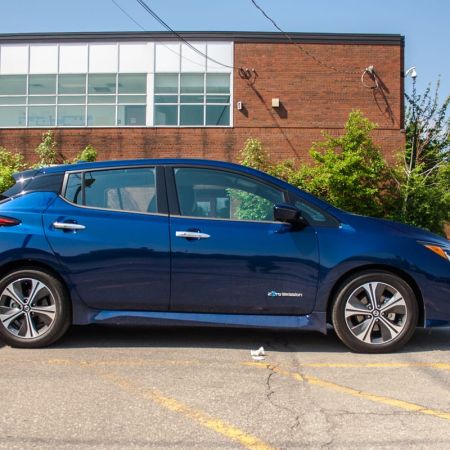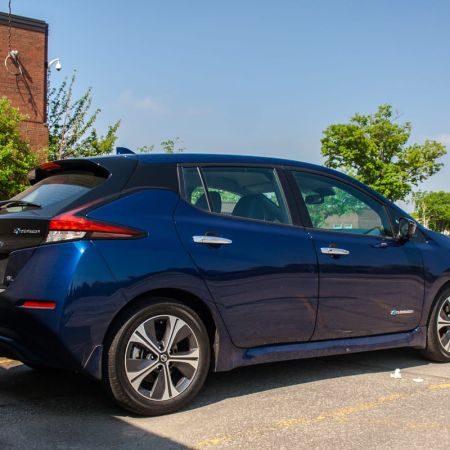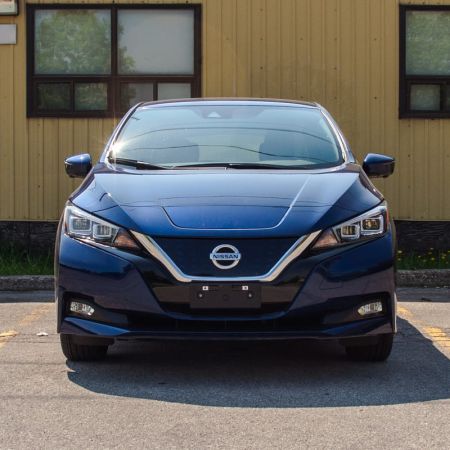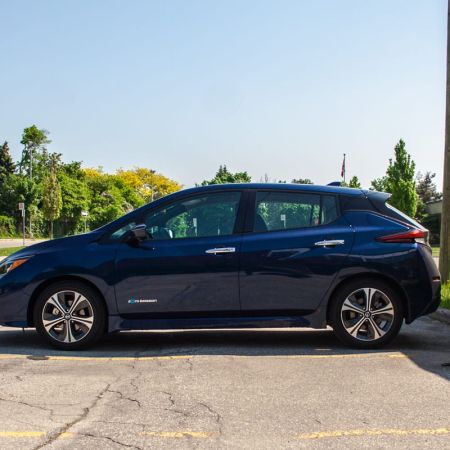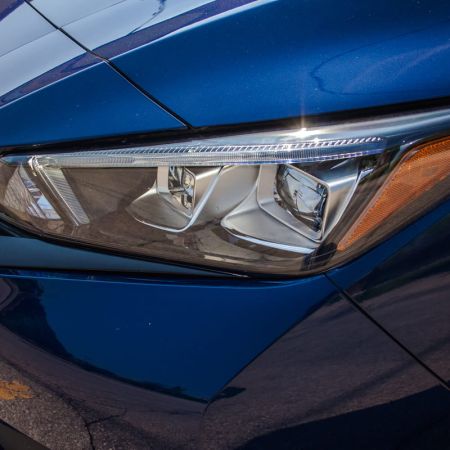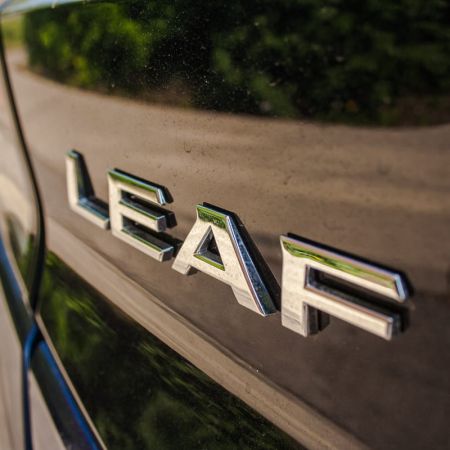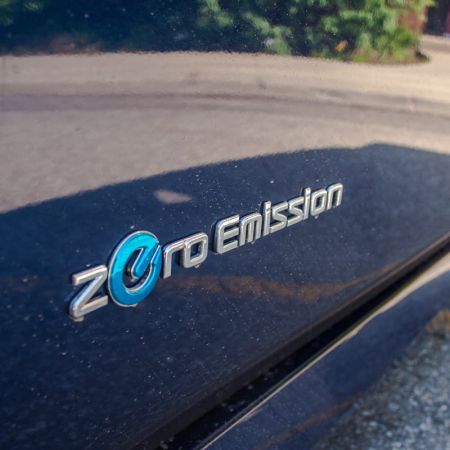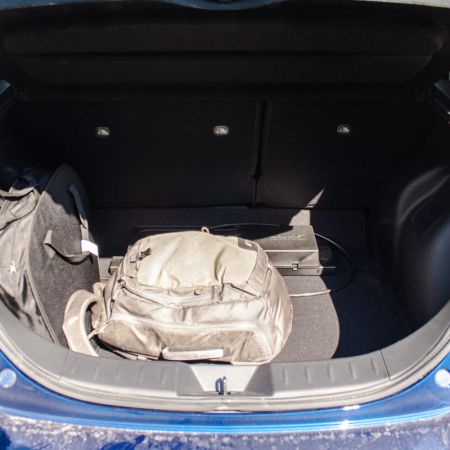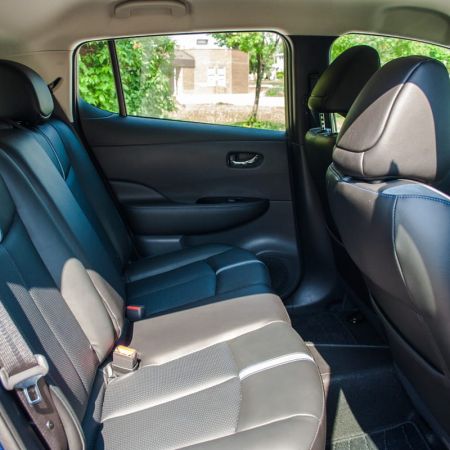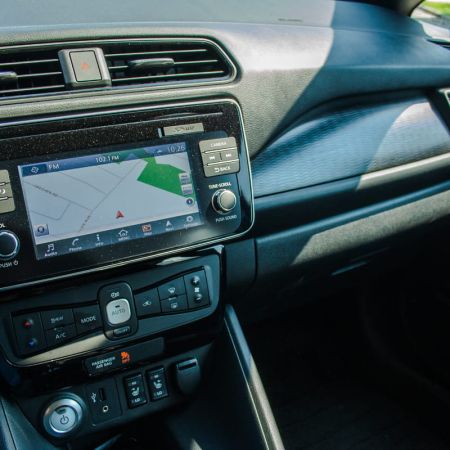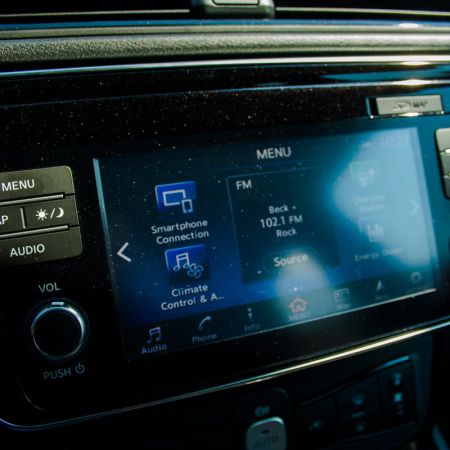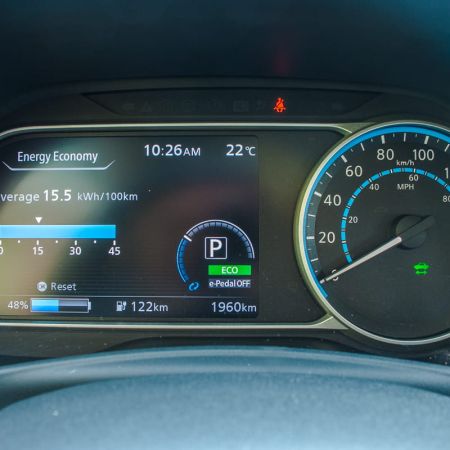Had you spoken to someone in the late 90s that on our approach towards the end of the second decade of the 21st century, we’d have electric vehicles all over the continent and that gasoline dependence was a thing of the past, they’d likely to believe you. But here we are in 2018 and aside from Tesla making the biggest splash, pure electric vehicle proliferation has almost stagnated.
This doesn’t mean that automakers aren’t trying – quite the contrary in fact with Chevrolet, Toyota, Honda, Hyundai et al making various offerings to the general public. When I was handed the keys to the all new, second generation, fully loaded 2019 Nissan Leaf SL, I was genuinely looking forward to enjoying a week without spending a dime on gas.
From the outside, this new Leaf looks like a larger and sleeker Nissan Versa Note (reviewed here). The latter part of which is critical for the Leaf to maintain the same coefficient of drag of 0.28 as the previous generation yet ever so slightly upsized in every dimension by roughly an inch. Unfortunately, this doesn’t really net any increased dimensions for interior space, as all of that remains identical. Stylistically though, this all new Leaf is a little more conventional than the original stub-nosed vehicle and can blend in far better amongst the subcompact crowd.
As a subcompact car owner, I always appreciate the ease in which one can get in and out of modern cars these days. The Leaf’s seating position and relative stance makes getting in and out a mundane activity. The tilt and telescoping wheel along with the eight-way power adjustable driver seat makes finding a comfortable and effective driving position a breeze. The seats are supportive just enough without being intrusive and the SL trim’s standard leather-appointed seats are comfortable enough.
Greeting you on the dash is a rather unconventional display with a speedometer on the right and a large rectangular display on the left. The display is primarily there to show you your vehicle’s diagnostics and information such as range, and electric efficiency. It’s quite effective and unobtrusive but you can’t help but think there could have been a slightly more efficient use of all that real estate.
Glancing over to the right is the now standard touchscreen display that is the defacto design choice. In this case, Nissan has opted to arm the Leaf with a 7.0” display which comes built in with navigation and voice recognition for hands free text messaging. Moving down the center stack onto the console is a stubby round gear selector. Granted, the stub is perfectly usable – it just feels weird initially but that’s just the purist in me nit-picking.
As a vehicle, the Leaf handles surprisingly well thanks to a low center of gravity offered by the heaviest components, the batteries, being mounted on the bottom. The suspension is soft enough to soak up all but the worst of the city bumps and resistant enough to lateral G-forces to allow some sort of corner carving but a sports car this is not.
What is particularly of interest to me in this new Leaf and is the little pull trigger right above the shifter; the E-pedal button. The idea behind it is simple, if you are depressing the accelerator pedal, you want to go forward and/or pick up speed. With the E-pedal engaged, the vehicle will immediately kick in regenerative braking as soon as you lift off the accelerator and the more you lift, the heavier the regen braking will be. In theory, this should render the conventional friction brakes almost useless in normal day to day driving.
From a practical standpoint of trying to recoup as much of the vehicle’s kinetic energy, this mode is brilliant. No time is wasted in trying as your foot transitions between the accelerator and brake pedal. In fact, during my week with the vehicle, I actively turned on the E-pedal function. This mode requires a little bit of practice to gauge exactly how much room you really need to to start lifting at in order to ensure you don’t stop way short of the mark. Seven times out of ten, I managed to get the vehicle to stop perfectly where I wanted it to.
The remaining three times often involved issues relating to the fluidity that is city traffic. A car pulling out of a driveway, lights changing, etcetera. The regenerative braking is simply not strong enough to haul down the car fast enough and the application of the friction brakes is required – this often can be somewhat jarring. Perhaps on the next iteration, Nissan can slap on a higher peak regenerative braking system with the same linear response but higher maximum deceleration capability.
This brings me back to the point that is both the strength and severe weakness of electric cars in general. Everything is best when perfectly calculated. You predetermine your braking points instead of reacting to them. You find your best route that nets you the shortest distance. You plan and you plan and you plan some more. The underlying denominator on why you have to plan?
Range anxiety. It is real my good readers. And it got to me. With a published maximum range of just over 240km (nearly double that of the previous car), I originally had no real fears of running out of charge thanks to the ability to charge at work and at various points along my trips. To quote Helmuth von Moltke: “No battle plan survives contact with the enemy”. Between being stuck in slow moving highway traffic in the crack of a spring heat wave, to ramping up and down speeds as traffic eased, I watched with ever so increasing alarm as my predicted range kept dropping faster than what had actually been traveled.
This forced me to constantly spend time keeping track of all possible charging points along the way but with the myriad of various charge station operators like ChargePoint which require an account to be setup in order to use them, things aren’t quite as simple as rolling up and throwing in some vintage dino juice and getting back on the road. At one point, I was down to about 30km left and desperately got off the highway searching for various charge points that the built in navigation thankfully knows about.
This is by no means a condemnation of the Leaf but rather highlighting an issue that underlines EVs today: the infrastructure simply is unified or varied enough to handle the influx of people who want to get on board. The Leaf is a practical vehicle with seating for five and 668L of storage space behind the rear seats. If you are truly looking at the top half of the purported 240km range, you’re going to be in for a shock (pun not intended) when you realize that charging stations are a delicate hit-or-miss situation and the lack of any sort of range extender on this vehicles makes range anxiety a very real thing.
At a MSRP of $41,998 as-tested before rebates for this SL trim, Nissan is relying heavily on the provincial electric car incentives to make this a viable financial decision. With the recent change in government and the recent decree of ending all of these incentives, the $14,000 rebate (at the time of this writing) puts this car at jeopardy of being relegated to the shelf. The Leaf in itself is an excellent vehicle, but the influx of electric vehicles is challenged by the lack of infrastructure currently available in our urban cores.

